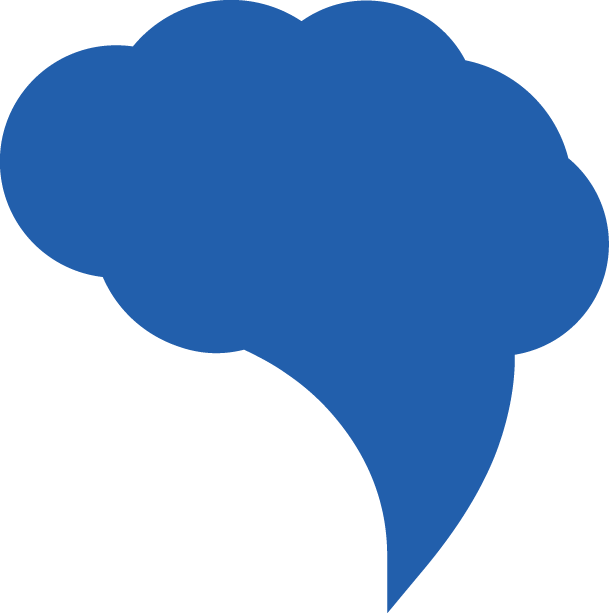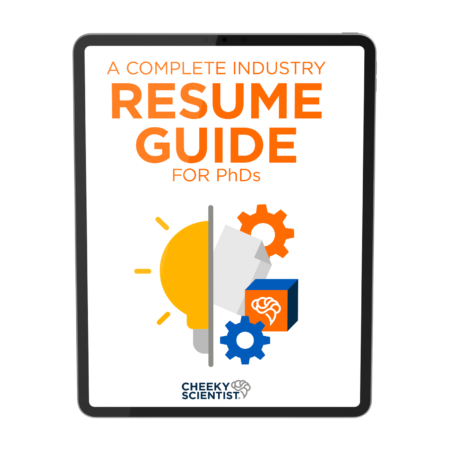5 Ways To Guarantee Your Job Application Email Gets A Reply From The Hiring Manager

“It’s not me, it’s them.”
That’s what I thought.
When I started my transition, I knew I needed to network with industry professionals to get a job.
So I found people on LinkedIn and set up informational interviews to learn more about what these people did.
I created an email template to save time, changing only the salutation for each one.
I felt organized and efficient.
That’s how I saw myself.
Here’s how others saw me — sloppy and unprofessional.
This was my script:
‘Hello, My name is Cathy Sorbara. [Insert my autobiography] I see that you are the CEO of company X that does similar research as I do and there is an opening that I would be well-suited for. [Insert list of questions] I have attached my resume to this email for your perusal. Kind regards.’
I thought I was showing congruence, interest, and credibility.
I thought I had it all figured out.
So I sent my messages.
And then I waited.
And waited.
My response rate was 0%.
Literally — ZERO.
Is it possible that no one had the time of day to speak to me?
Were my emails going straight to their spam folders?
Were these people jerks, or was I simply too inferior to them?
I didn’t understand what I was doing wrong.
I became frustrated and angry.
Finally, I met someone at a networking event who agreed to introduce me via email to an acquaintance of theirs that worked at a company I was interested in.
In her email, I noticed that there was no mention of what I did, or the list of questions I wanted answered.
It was only two sentences long.
She complimented him on his recent promotion and then said she had a close friend (me) that was interested in what he did and would value his expert opinion if he could spare 5 minutes.
I immediately received an email reply.
It was a breakthrough.
I realized my past messages were labeling me an amateur at best.
Here’s what my past messages said about me:
“I do NOT respect your time and am only looking for answers without providing any incentive.”
“Your time is NOT valuable and I’m just as important as the other 140 people in your inbox.”
“I want to use you for my own gain.”
Of course, this was not what I wanted to communicate.
So, I took notes from my colleague’s email and immediately changed my format.
The first thing I did was personalize every email.
My response rate grew significantly.
After applying a few other key strategies, I was able to set up informational interviews, meetings with recruiters, and eventually get referrals for professional site visits.
Why Your Job Search Messages Are Getting Deleted
Ever wonder why your emails never get returned?
How many messages have you sent off in your industry job search without receiving a response?
How many have you sent without even getting a courtesy rejection?
According to a 2014 study by the technology market research firm, The Radicati Group, Inc., business users send and receive an average of 121 emails a day.
This is expected to grow to 140 emails a day by 2018.
I’d say that’s conservative.
(And I know — that’s hard to fathom when you’re in academia and only sending and receiving a few dozen emails a day at most).
Here’s the point…
Receiving over a hundred emails a day makes it hard to keep your inbox tidy.
It makes it really easy to miss important messages, let alone messages from strangers.
Unless you know someone well and they are used to receiving your emails, a 30-50% response rate is the best you can hope for, according to data pulled anonymously from 6,000+ salespeople.
In other words, many of your job search messages are being deleted.
If you’re carelessly crafting these messages without any particular strategy, most or all of your job search messages are being deleted.
The only way to ensure that your messages are being read, is to put a strategy in place.
The right strategy.
A proven strategy.
5 Ways To Ensure Your Job Application Email Gets A Reply
Let’s face it, you do not have time to constantly attend networking events and meet people face-to-face.
Sometimes you have to rely on emails and LinkedIn messages to build professional relationships.
Very often, you’ll have to use these messages to follow up with initial connections, set up interviews with recruiters, and ask for referrals.
You have to learn how to maximize this method of communication.
Otherwise, you’ll just frustrate and annoy everyone.
Most of the people you email will not know you and do not owe you a response.
You need to accept this fact.
You also need to change your approach in response to this fact.
Personalization is key.
Considering your audience is key.
You need to start conveying that you value other people’s time.
Here are the 5 biggest changes you need to make to your job application emails to guarantee a response from hiring managers, recruiters, and industry professionals…
1. Don’t wait until you are desperate to reach out.
If you wait until a job opens to reach out to someone who can get you that job, it’s too late.
No matter what you do at that time, you will appear insincere.
Urgency and insincerity go hand-in-hand.
If you ask for a referral too soon, you’ll instantly dissolve the professional relationship you’re trying to build.
Always build rapport first, before asking for any favors.
Be patient.
If you lack patience, others will sense your desperation and your efforts will come across as opportunistic and pressured.
Remember, most companies offer internal incentives to their employees — the ones who refer candidates like you.
Use this knowledge to calm yourself.
To give yourself patience.
At the same time, realize that these employees only get the incentive if you actually get hired.
This means that you still have to prove yourself by adding value and developing a professional relationship — again, before asking for a referral.
Referrals are earned with time and respect, in addition to your transferable skills.
Your ability to cultivate relationships will showcase you as the best and easiest fit for their team.
Building professional relationships takes time.
As a result, your first email should be entirely based on offering value to the other person.
This value does NOT have to be work-related.
You can add value by finding common ground of any kind: like a shared influencer that you both follow on LinkedIn, or a social media group you have both joined.
Building rapport and networking efficiently establishes you as a person that understands their needs as an industry professional.
You want them to naturally think of you for a position — you want it to be THEIR idea.
You do NOT want to force YOUR idea of a referral down their throats.
Instead of focusing on immediate benefits (and unrealistic expectations), focus on building a long-term mutual relationship.
See the person behind the title.
You can’t rush a professional relationship or build it last minute.
But you can build it slowly through mutual interests: common alumni, sports interests, fellow conference attendees – these are all excellent ways to strike up an initial conversation that will elicit a response.
The key is to do your homework on the recipient of your email or LinkedIn message and determine how to best spark a conversation that will arouse their interest.
2. Never open a message with your autobiography.
Save your list of your top 10 best accomplishments for your fridge at home.
Most academics assume that the best way to get someone’s attention is to impress them with their background and accomplishments.
Wrong.
Never, ever start an email with ‘I am a PhD in [subject] at the University of [Name] under the supervision of Prof. X. I study…’
This will guarantee your email will be immediately deleted.
A stranger does NOT care about who you are or what you’ve done.
They do NOT care about how many letters of recommendation you came up with or all of the things that you think are important about you.
They are busy.
They care about how you can benefit them.
That’s all.
And that’s the way it should be.
How selfish are you, anyway?
How selfish is it to reach out to someone you barely know, or don’t know at all, and tell them all about yourself?
This arrogant behavior will keep you from ever getting a job in industry.
It’s time to change your approach.
Never make the mistake of infusing ego into your email.
MOST IMPORTANTLY, never attach your academic CV directly to the first email you send.
Industry professionals do not care about your publications, who your supervisor is, or what your specific field of study is.
Avoid talking about yourself entirely.
Instead, focus on the person you are networking with.
Ask them about THEM.
Find a common interest and ask for THEIR opinion.
Ask them about THEIR experiences in their current position or in a past position.
Also, keep your professional messages short and simple.
MIT’s Van Alstyne argues that roughly 140 characters is ideal for communicating your professional messages.
Brevity is the soul of a good email.
It means you are considerate of your audience.
It means you have professional awareness.
Know your audience and be mindful of what they need to see from you, not what you want to show them.
3. Use proper email etiquette.
There are obvious, but often overlooked, ways that can increase your email response rate.
First and foremost…
Read the email before you send it.
Even better, have someone else read it over for you.
A lot of people don’t bother to do this and find out when it’s too late that their first impression was littered with spelling and grammar mistakes.
Refusing to carefully proofread your messages is an excellent way to come across as sloppy and unprofessional.
Sending first draft emails is high school caliber, not PhD quality.
Apart from this, reading your email through the eyes of the recipient is a great way to craft a more effective message and avoid misunderstandings or inappropriate comments.
Second, avoid using abbreviations or emoticons.
Everything in your message should be business professional.
No one will take you seriously if you use abbreviations such as BTW or LOL, even if the meaning is clear.
The same goes for emoticons, such as the smiley 🙂
This is not a text to your best friend — this is the first point of contact with a potential employer or colleague.
Take the time to craft your professional messages carefully.
Of course, you can insert strategic personal details like shared interests, hobbies, and so forth, but these should all be communicated professionally.
Third, use a meaningful subject line.
Keep your subject lines concise but specific and interesting: use them to pique the other person’s interest.
But don’t be too clever.
Never sacrifice clarity to cleverness.
For instance ‘Quick question about your RNAi technology’ is better than ‘PhD seeking advice on careers as a research scientist at your company’.
Use spacing, numbers, and bullet lists to visually break up your message so that it’s easy to digest and take action.
If you are using a personal account to email, make sure the user ID is professional.
If you are sending a LinkedIn message, make sure your profile is complete and up-to-date.
Anything that has the potential to be misconstrued or seem careless will result in silence.
4. Make it easy for the other person.
People will be more responsive and willing to help if you give them clear directions and email requests that are easy to answer.
Avoid complex messages that require more time and mental energy to address.
This means deleting the list of the 10 questions you have posed to them.
Instead, suggest an informational interview, but only after you’ve established rapport.
When you do suggest a meeting, avoid ending your email with an open-ended statement.
For example, ‘Let me know what works best for you’ can be daunting to the reader as they will have to make the decision for the both of you.
It’s too much work.
Especially for someone doing YOU a favor.
As a result, the other person will opt to make NO decision at all.
A better strategy is to suggest a meeting date and time.
When you suggest to meet, specify that it will only be for 5 minutes.
They will be more likely to agree if they feel you will not be taking up too much of their time.
Even better, tell them that you will be in the area anyway so they don’t feel a sense of obligation or guilt.
(When you do finally meet, stay focused.)
MOST IMPORTANTLY, do not send your job search emails first thing Monday morning.
Consider your audience: they’ve likely just opened their inbox to see 100+ unread messages.
They are already overwhelmed and too busy to respond.
John Foreman, Chief Data Scientist at MailChimp, suggests sending cold emails mid-morning during the middle of the workweek.
This will ensure that your email is not buried in the other person’s inbox, making them much more likely to respond.
5. Follow up, but be patient.
You have sent your first job search message and the waiting game has begun.
This is where most PhDs give up.
They’re used to their academic advisors or labmates responding immediately to their messages so after a day, they assume the other person isn’t interested.
If you think industry professionals are going to respond to you in 24 hours, you’re naive.
Remember, on average, these people are getting 100+ emails a day.
Most industry professionals will take one week to completely clear out their inbox from the previous week.
Then the process starts all over again.
Many industry professionals will take (at least) one month to answer cold emails.
So before you send your first message, adjust your expectations.
Adjust your strategy too.
Your strategy should not be to send one message and then sit back and wait for a response.
Your strategy should be to send one message and then 1-2 weeks later send another message, and then 1-2 weeks later send another message, and so on.
All the time adding value to the other person and NEVER reminding them of a past unanswered message.
Here are some options for adding value in your email:
- Include a resource that they may find helpful or interesting
- Introduce them to someone in your network that might be helpful to them or their business goals
- Share their company, content or products with others, endorse them on LinkedIn
- Invite them to an event or conference that they may find interesting or fun
- Ask a question about a new feature released by their company and let them display their knowledge and insights to you
Here’s where the guarantee comes…
If you keep adding value to the other person every 1-2 weeks without ever asking for anything in return, you will get a reply.
Always.
Lastly, keep an Excel sheet of who you reached out to, the date, and when you should follow up next — this will keep you organized.
Be sure to diversify your approach too.
Don’t always follow up by email. Instead, follow up by email one week, LinkedIn two weeks later, and then in a group message two weeks after that, and so on.
The hard truth is you are just another number in someone’s inbox. If you want to get through to an industry professional, you need to show them respect and use proper email etiquette. This means keeping it succinct and being complimentary. Do your homework before you reach out to someone for the first time — do you have anything in common? Was there a recent professional achievement that you can congratulate them on? Anything you can do to personalize the message will increase your rate of a reply. Becoming a master at reaching out will take you that much closer to landing interviews, referrals and ultimately transitioning out of academia.
If you’re ready to start your transition into industry, you can apply to book a free Transition Call with our founder Isaiah Hankel, PhD or one of our Transition Specialists. Apply to book a Transition Call here.

ABOUT CATHERINE SORBARA, PH.D.
Cathy has a PhD in Medical Life Science and Technology and is COO of the Cheeky Scientist Association. Cathy is passionate about science communication including translating science to lay audiences and helping PhDs transition into industry positions. She is Chair of Cambridge AWiSE, a regional network for women in science, engineering and technology. She has also been selected to take part in Homeward Bound 2018, an all-female voyage to Antarctica aimed to heighten the influence of women in leadership positions and bring awareness to climate change.
More Written by Catherine Sorbara, Ph.D.































